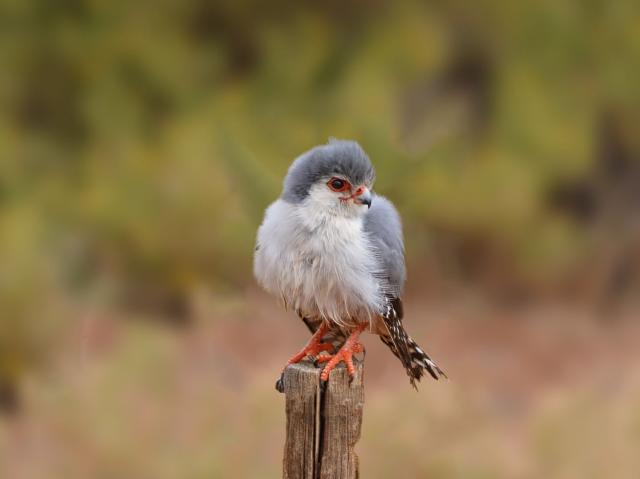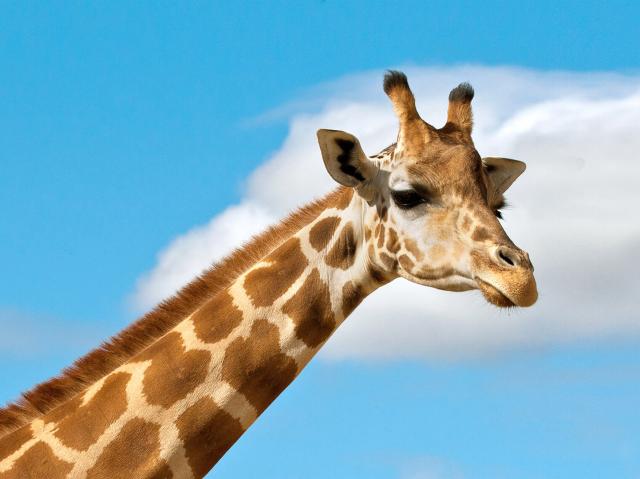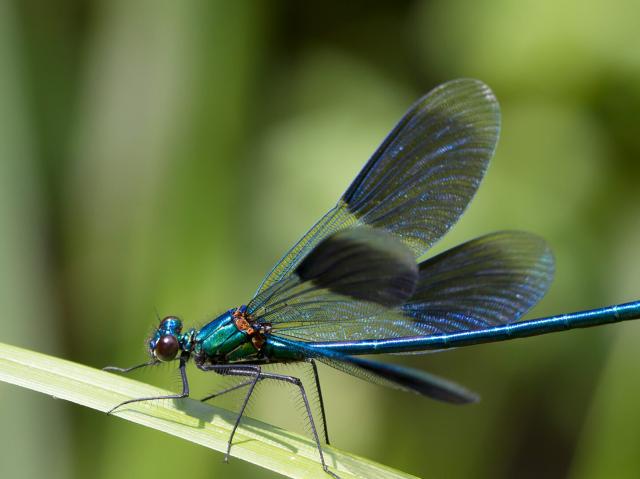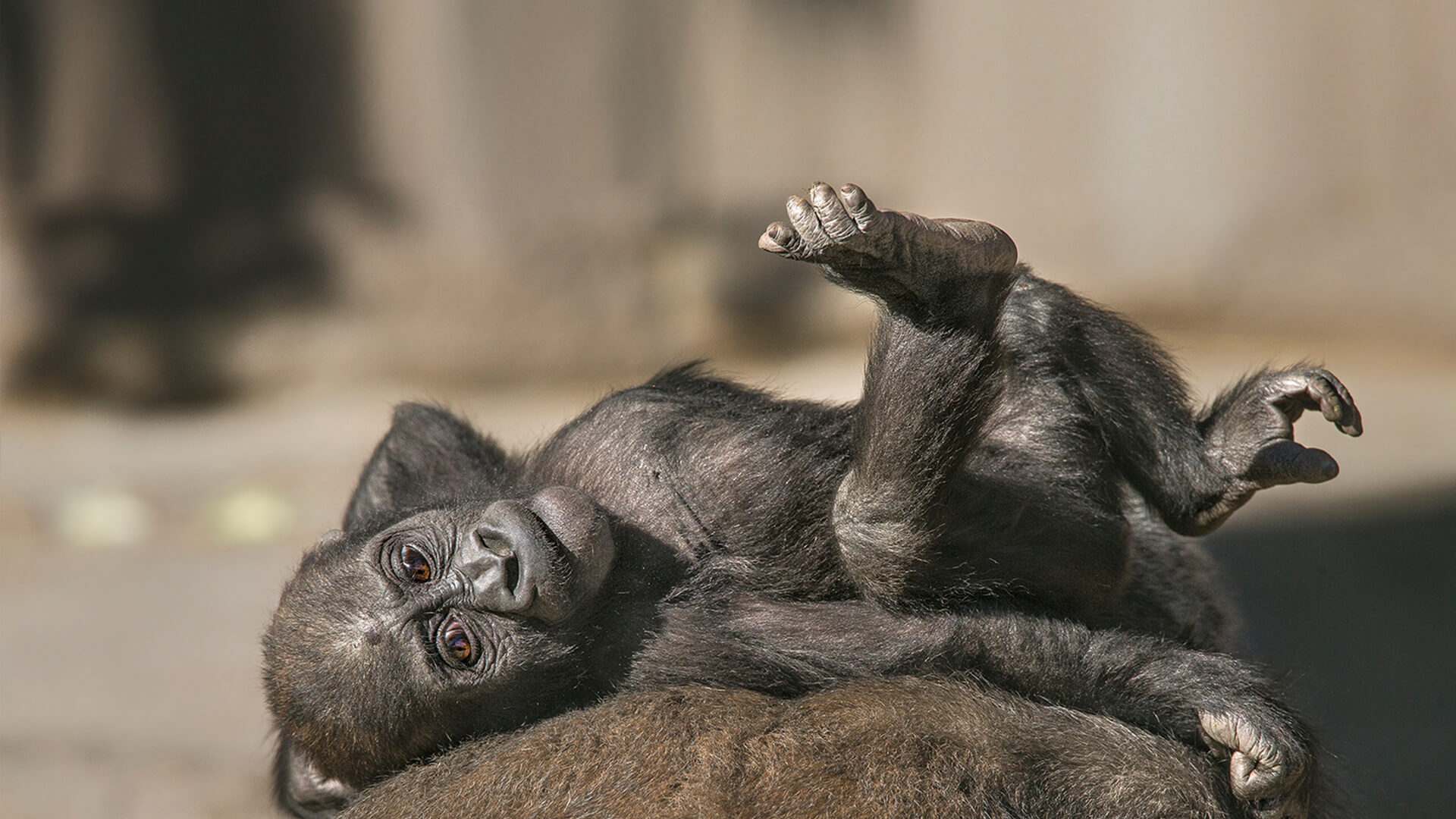
Gorilla

- CLASS: Mammalia (Mammals)
- ORDER: Primates
- FAMILY: Hominidae
- GENUS: Gorilla
- SPECIES: gorilla (western gorilla), beringei (eastern gorilla)
- SUBSPECIES: Gorilla gorilla gorilla (western lowland gorilla), Gorilla beringei beringei (mountain gorilla), Gorilla beringei graueri (Grauer's gorilla), Gorilla gorilla diehli (Cross River gorilla)

ABOUT
Gentle giants. Ever since King Kong first gave Fay Wray that unexpected lift to the top of the Empire State Building in 1933, Hollywood has depicted gorillas as aggressors. But the truth is, they’re peaceful, family-oriented, plant-eating primates that live in complex social groups. They are the largest of all primates—the group of animals that includes monkeys, lemurs, orangutans, chimpanzees, and people.
Many like to compare gorillas with people, but there are several differences. Although they can stand upright, gorillas prefer to walk using their hands as well as their legs. Their arms are much longer than their legs, and gorillas can use the backs of their fingers like extra feet when they walk. This is called knuckle walking.
Like all great apes (except people), gorillas require rainforests to make their living, and the forest depends upon them, too. A gorilla’s fibrous scat acts as rich fertilizer for the forest, and seedlings sprout from it rapidly, making gorillas important forest regenerators.
HABITAT AND DIET

Can you imagine waking up each morning surrounded by food? Almost everything a gorilla eats is plant material, so life in the forest is like living in a huge restaurant! Gorillas eat leaves, stems, fruits, seeds, roots, ants, and termites. Unlike chimpanzees, gorillas don’t use tools to get termites; instead, they just smash the termite mound to get the tasty insects living inside! Their big toes are opposable, like our thumbs, which helps them grab food and climb trees. An adult male eats up to 40 pounds (18 kilograms) of food each day.
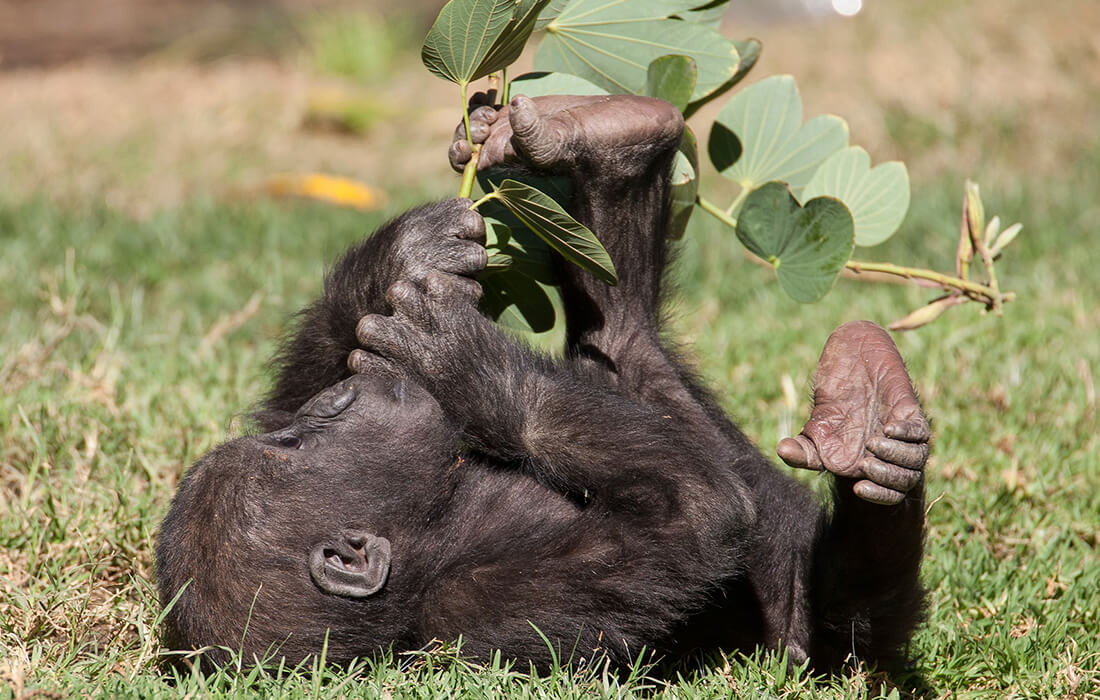
At the San Diego Zoo and San Diego Zoo Safari Park, gorillas eat a variety of browse and produce. Their food is distributed throughout their habitats, offering dynamic opportunities to express natural foraging behaviors.
SaveSave
FAMILY LIFE

A group of gorillas living together is called a “troop.” There can be 5 to 30 gorillas in one troop, led by a strong, experienced male known as a "silverback." His job is a big one. He is responsible for the safety and well-being of the members of his troop. The silverback makes all the decisions, such as where the troop travels for food each day, when they stop to eat or rest, and where they spend the night.
A gorilla troop doesn’t stay in the same place for more than a day. After all, the troop doesn’t want to deplete its food source! Each morning the silverback leads his troop to a new area where food is plentiful. After a morning of munching, each adult gorilla gathers leaves, twigs, and branches to make a day nest for resting while the youngsters play. After their nap, the troop eats again until bedtime, when they make yet another nest, either on the ground or in a tree, for a good night’s sleep. Gorillas never use the same nest twice.
Gorillas are naturally peaceful, but sometimes a younger male from another troop challenges the silverback. To scare unwanted gorillas away, he beats his chest with cupped hands to make a loud noise, screams, bares his teeth, and then charges forward. Sometimes he breaks off branches and shakes them at the intruder. It is an awesome display!
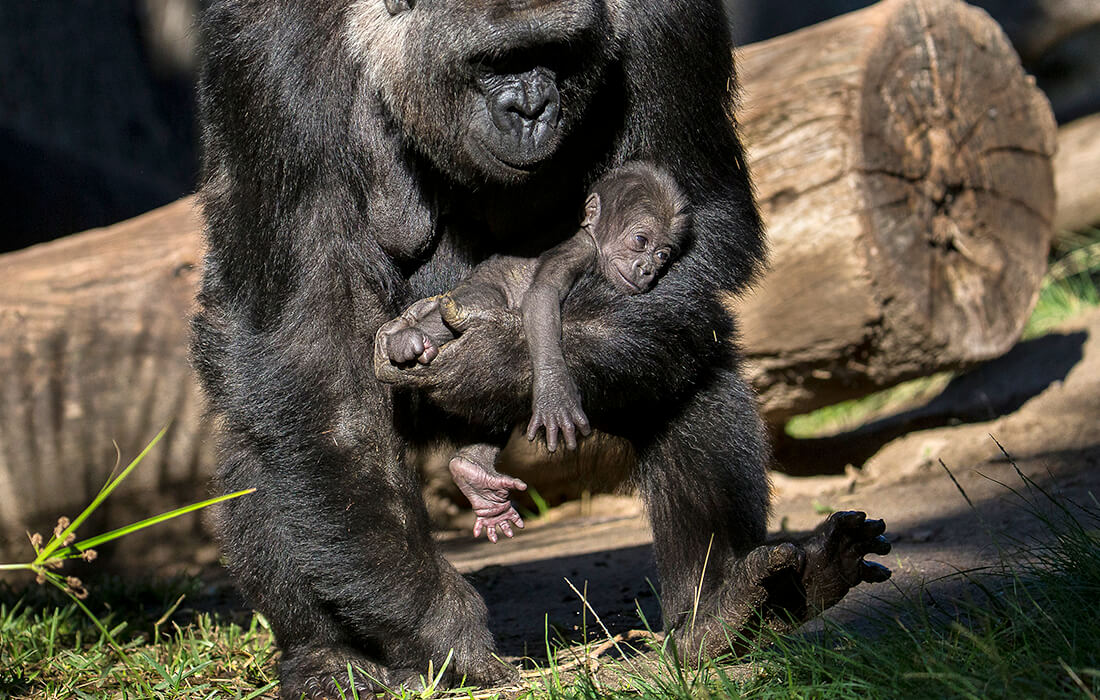
A female gorilla can have babies of her own when she is about eight years old. But first, she must leave her troop of origin and find another troop or a lone silverback to live with. Infants only weigh a few pounds at birth, and mothers are generally over 200 pounds (91 kilograms), so births are quick. A mother carries her baby against her chest for the first several months until the little one can hang on to Mom’s back, which frees up her hands to walk and carry food items.
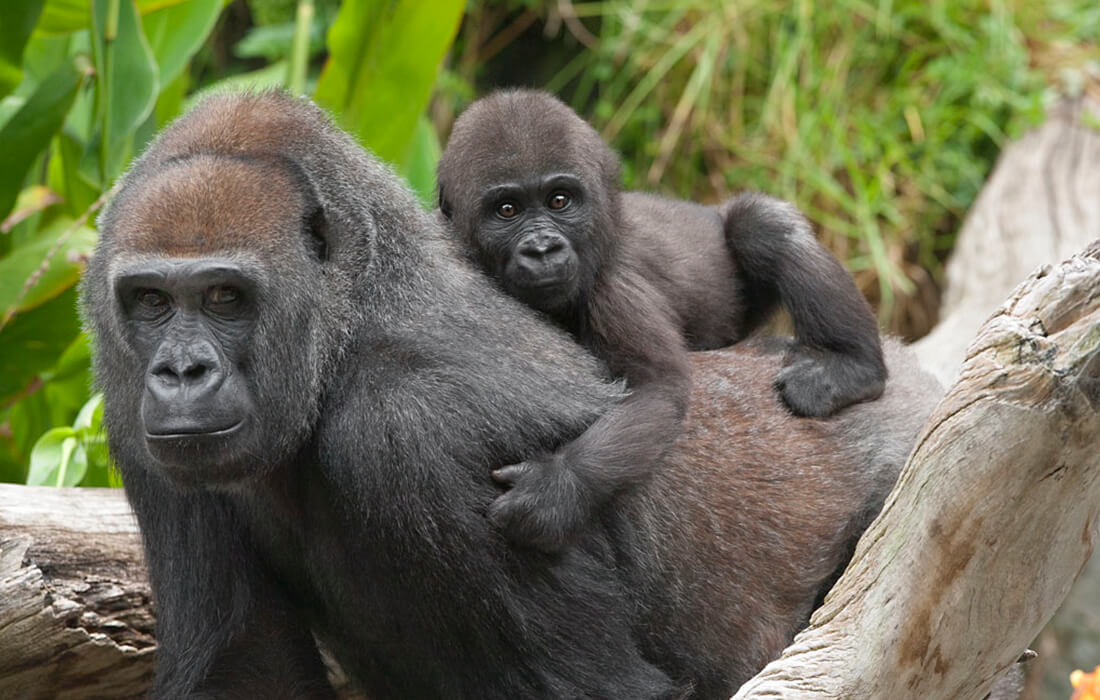
A newborn grows quickly. At five to six months old, an infant learns to walk, and by 18 months of age it can follow Mom on foot for short distances. Still, the safest place for the youngster is its mother's back as she travels through the dense vegetation of their forest home.
Young gorillas learn by imitating what the others in the troop are doing and by play fighting with other youngsters. Even the stern silverbacks are gentle with the little ones as they practice new skills. A young gorilla stays close to their mom, sharing her nest, until it is four to six years old. Gorillas have been known to nurse for up to three years.
SaveSave
CONSERVATION
Gorillas have no natural enemies or predators, yet these peaceful primates face critical risks because of people. People hunt gorillas for food called bushmeat, and the expansion of logging and mining shrinks gorilla habitat. Armed conflicts in central Africa have caused refugees to pour into areas once inhabited by gorillas. Disease epidemics such as the Ebola virus have also decimated gorilla populations that were previously considered secure within their natural habitat.
Gorilla populations have dramatically declined since the early 1980s, with almost half of the entire eastern gorilla population suspected to have been wiped out. Illegal hunting has become a lucrative activity in the region. While hunters often lay snares targeting other mammals, sadly, many gorillas die or lose limbs after being accidentally ensnared. An illegal pet trade is also on the rise. Behind each infant gorilla caught by poachers, several family members are often killed.
In 2000, San Diego Zoo Wildlife Alliance established a long-term field program in Cameroon, which is now part of our African Forest Conservation Hub, focusing on the behavior and habitat use of gorillas and other primates in the mountainous southwestern Cameroon rainforest. It isn’t clear whether gorillas in the area’s Ebo Forest are western lowland gorillas Gorilla gorilla gorilla or Cross River gorillas Gorilla gorilla diehli—or something else. In 2005, we received permission to establish permanent study sites inside the Ebo Forest, where surveys gathering ecological and behavioral data for various wildlife, including gorillas, are collected daily. In 2012, the African Forest Program established Clubs des Amis des Gorilles (Gorilla Guardian Clubs) in the villages closest to the gorillas. These clubs bring people together (including community elders and authorities) to support gorilla conservation and foster pride in the unique biodiversity of the Ebo forest.
The critical conservation status of gorillas underscores the urgency for gorilla conservation science. In collaboration with wildlife experts and conservation scientists in countries where gorilla populations survive, San Diego Zoo Wildlife Alliance helps train conservation scientists in observing and learning from remaining wild gorilla populations. Through the first genetic studies on populations of mountain gorillas, it was discovered that regionally, these gorillas are genetically distinct.
Genetic differences were also found within western lowland gorilla populations, which had been considered a single subspecies. By gathering and analyzing fecal samples from gorillas, conservation scientists from San Diego Zoo Wildlife Alliance and wildlife authorities and conservationists in Uganda, Rwanda, Democratic Republic of the Congo, and Cameroon can shed light on the genetic variation across regions.
Africa may seem far away, but there are some things you can do to help! When you buy wood or furniture, ask if the wood has been certified. Buying certified wood encourages logging companies in Africa to follow wildlife laws that help protect gorillas and other African wildlife.
Did you know that cellphones have a connection to the well-being of gorillas and other wildlife in central Africa? Cell phones contain a rare ore called coltan (short for columbite-tantalite). This metal is found in central Africa, and increased mining operations for coltan leads to habitat loss and increased hunting pressure on gorillas and other wildlife. Surprisingly, wildlife reserves suffer most from mining. With the increased popularity of cellphones, thousands of illegal miners have invaded the protected parks. Needing food, they have hunted gorillas and elephants to near extinction in these areas.
By joining San Diego Zoo Wildlife Alliance as an ally for wildlife, you help save species worldwide.
Sounds
LIFE SPAN
On average, 33 years for males and 39 years for females
YOUNG
Gestation: 8 to 9 months
Number of young: usually 1, twins are rare
Weight at birth: 4 to 5 pounds (1.8 to 2.3 kilograms)
Age of maturity: About 8 years for females; 13 years for males
SIZE
Height: Females, up to 5 feet (1.5 meters); males, up to 5.7 feet (1.75 meters)
Weight: Females, 159 to 216 pounds (72 to 98 kilograms); males, 300 to 400 pounds (136 to 181 kilograms)
FUN FACTS
No two noses on a gorilla are alike. Conservation scientists in Africa photograph the faces of gorillas to help identify individuals.
The big toe of a gorilla’s foot is opposable, like our thumb, to help it grab food or climb trees.
Gorillas at the San Diego Zoo Safari Park peel radishes with their teeth before eating them.
The word “gorilla” comes from a Greek word meaning “tribe of hairy women.”




